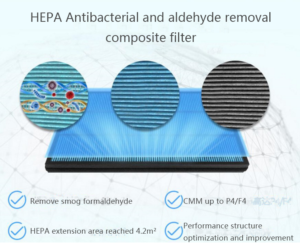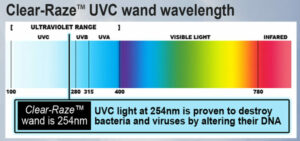Air purifier filters utilize fine sieves that filter particles out of the circulating air. As air flows into the air purifier, the finer the sieve inside of the air purifier, the smaller the particles it will trap. High Efficiency Particulate Air (HEPA) filters are the benchmark for air purifier filters, which are guaranteed to trap 99.97% of airborne particles larger than 0.3 microns in size. Microns are the standard unit that is used to measure the size of particles in the air. Each micron is equivalent to 1/25,400 of an inch. The naked eye cannot see anything that is smaller than 10 microns in size, so pollutants like bacteria and viruses escape detection. HEPA filters efficiently remove smaller-sized allergens like dust, smoke, chemicals, asbestos, pollen, and pet dander. Room air conditioner filters can only capture particles 10.0 microns or larger, so they are not as efficient as air purifier filters for cleaning the air.
The more that air passes through a HEPA filter, the cleaner the air will become. The room capacity of a HEPA air purifier will determine whether the air cleaner can handle your air purifying needs. Top-of-the-line brands like Austin Air air purifiers will provide approximately 6 air exchanges per hour in an average room and they contain an average of 15 lbs of activated carbon/zeolite blends, which absorb chemicals and odors.
In addition to the HEPA filter, Agreen air purifiers offer an optional medical-grade ultra-violet (UV) light system that will quickly kill viruses, bacteria, and fungi when they enter the air purifier. UV light also protects the HEPA filter from biological and viral contamination.